Shopping Cart
0 item(s) - R0.00-
- - Amplifier Module
- - Arduino Compatible - Development Platform
- - Arduino Compatible Modules & Shields
- - Breakout Boards
- - Cables / Hookup wires
- - Displays
- - Enclosures
- - Magnets
- - Motors & Gears
- - Nuts & Bolts
- - Peltier Cooler Heater
- - PIR
- - Sensors
- - Servo's & Motors
- - Solar
- - Stand Alone Modules
- - Stepper Motor & Drivers
- - USB Programmers & Converters
- - Voltage Regulator & Chargers
- - RC Hobby Parts
-
- - AC DC Cooling Fans
- - Cable Ties
- - Day/Night Switches
- - Electrical Plugs & Connectors
- - Gate Remotes & Receivers (Universal)
- - Heat Shrink Sleeves
- - Insulation Tape
- - Lighting & Globes
- - Mains Power Cables
- - Power Supplies & AC/DC Adaptors
- - Security Lights LED Type
- - Solar Charge Controllers
- - Surge Protectors
- - Timers
-
- - Battery Holders
- - Breadboard
- - Bridge Rectifier
- - Buzzers
- - Capacitors
- - Crystals
- - Diodes
- - Electromechanical
- - Fuses
- - Headers
- - Heat Sinks
- - IC Sockets HQ
- - IC Sockets TIN
- - IC's --> Semiconductor
- - Inductors
- - Laser Units (CD Players)
- - Microcontrollers & CPU's
- - Opto Electronics
- - Panel Meters And Displays
- - Passive Components
- - Pilot Lamps & Fittings
- - Plugs & Sockets
- - Resistors
- - Rotary Potentiometer
- - Semiconductors
- - Sensors
- - Switches
- - Transformers
- - TVS Diodes
- - Veroboard / Stripboard
- - Voltage Regulators
- - Zener Diode
Arduino Compatible - Development Platform

Arduino started as an open-source computer hardware and software project and user community that designs and manufactures microcontroller-based kits for building digital devices and interactive objects that can sense and control the physical world.
The Arduino software is also open-source. The source code for the Java environment is released under the GPL and the C/C++ microcontroller libraries are under the LGPL."
The open source project sought to provide an inexpensive and easy way for hobbyists, students, and professionals to create devices that interact with their environment using sensors and actuators. Common examples for beginner hobbyists include simple robots, thermostats and motion detectors.
An Arduino board consists of an Atmel 8-, 16- or 32-bit AVR microcontroller with complementary components that facilitate programming and incorporation into other circuits. An important aspect of the Arduino is its standard connectors, which lets users connect the CPU board to a variety of interchangeable add-on modules known as shields. Some shields communicate with the Arduino board directly over various pins, but many shields are individually addressable via an I²C serial bus—so many shields can be stacked and used in parallel. Official Arduinos have used the megaAVR series of chips, specifically the ATmega8, ATmega168, ATmega328, ATmega1280, and ATmega2560. A handful of other processors have been used by Arduino compatibles. Most boards include a 5 volt linear regulator and a 16 MHz crystal oscillator (or ceramic resonator in some variants), although some designs such as the LilyPad run at 8 MHz and dispense with the onboard voltage regulator due to specific form-factor restrictions. An Arduino's microcontroller is also pre-programmed with a boot loader that simplifies uploading of programs to the on-chip flash memory, compared with other devices that typically need an external programmer. This makes using an Arduino more straightforward by allowing the use of an ordinary computer as the programmer.
The Arduino integrated development environment (IDE) is a cross-platform application written in Java, and derives from the IDE for the Processing programming language and the Wiring projects. It is designed to introduce programming to artists and other newcomers unfamiliar with software development.
Ex Vat: R86.96
Ex Vat: R108.70
Ex Vat: R303.48
Ex Vat: R217.39
Ex Vat: R134.78
Ex Vat: R139.13
Ex Vat: R65.22
Ex Vat: R52.17
Ex Vat: R43.86
Ex Vat: R34.78
Ex Vat: R69.57
Ex Vat: R26.09



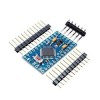
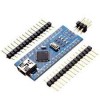
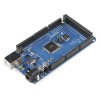
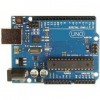
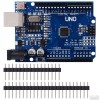
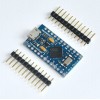
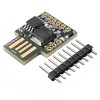

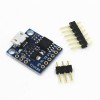
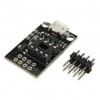
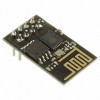
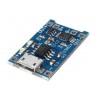




-80x80.jpg)















